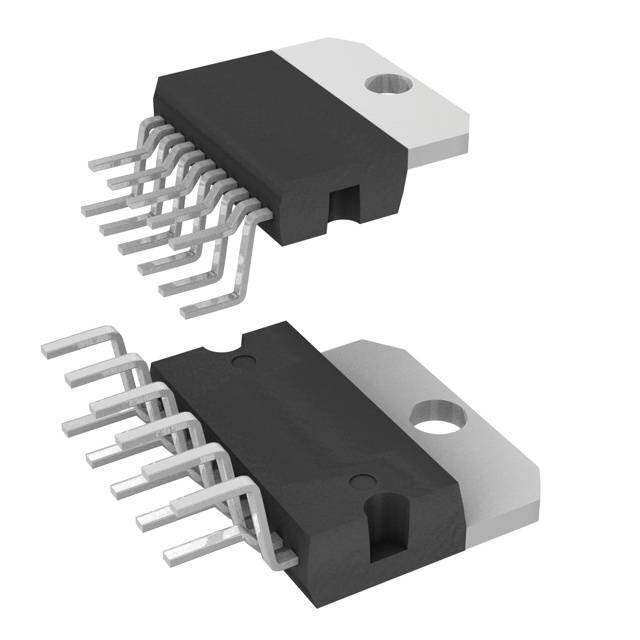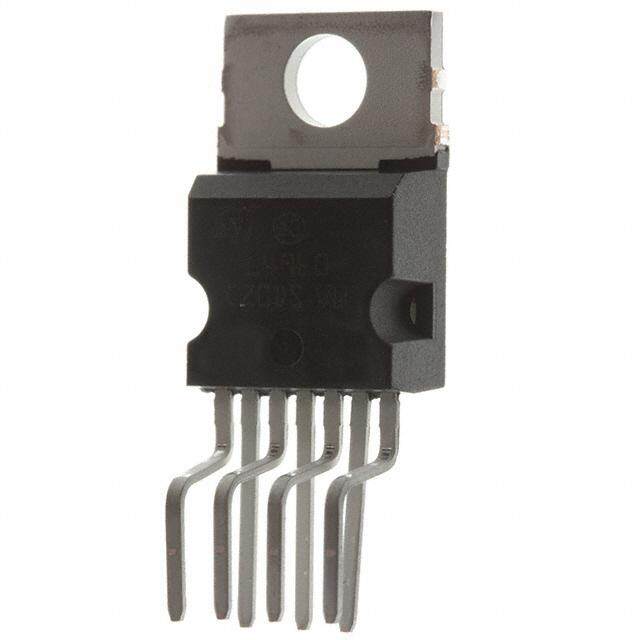ICGOO在线商城 > 集成电路(IC) > 线性 - 音頻放大器 > LM4876M/NOPB
- 型号: LM4876M/NOPB
- 制造商: Texas Instruments
- 库位|库存: xxxx|xxxx
- 要求:
| 数量阶梯 | 香港交货 | 国内含税 |
| +xxxx | $xxxx | ¥xxxx |
查看当月历史价格
查看今年历史价格
LM4876M/NOPB产品简介:
ICGOO电子元器件商城为您提供LM4876M/NOPB由Texas Instruments设计生产,在icgoo商城现货销售,并且可以通过原厂、代理商等渠道进行代购。 LM4876M/NOPB价格参考¥6.46-¥13.13。Texas InstrumentsLM4876M/NOPB封装/规格:线性 - 音頻放大器, Amplifier IC 1-Channel (Mono) Class AB 8-SOIC。您可以下载LM4876M/NOPB参考资料、Datasheet数据手册功能说明书,资料中有LM4876M/NOPB 详细功能的应用电路图电压和使用方法及教程。
LM4876M/NOPB 是由 Texas Instruments(德州仪器)生产的一款线性音频放大器,属于 Class AB 类放大器。其主要应用场景包括: 1. 便携式音频设备: LM4876M/NOPB 适用于需要低功耗和高音质的便携式音频设备,例如便携式音响、收音机或多媒体播放器。它能够在电池供电的情况下提供稳定的音频输出,同时保持较低的静态电流消耗。 2. 手机与智能手机: 该芯片可以用于手机或智能手机的扬声器驱动,提供清晰的声音输出。其内置的短路保护和热关断功能有助于提高系统的可靠性和安全性。 3. 玩具与电子学习设备: 在需要简单音频输出的玩具或教育设备中,LM4876M/NOPB 可以提供足够的功率驱动小型扬声器,同时保持低成本和小尺寸设计。 4. 家用电器中的提示音模块: 在一些家用电器(如微波炉、咖啡机或闹钟)中,该芯片可用于驱动提示音或报警声的扬声器,确保用户能够听到清晰的音频信号。 5. 汽车电子系统: LM4876M/NOPB 可用于汽车内部的小型音频系统,例如后视镜摄像头的提示音模块或车门未关提醒装置。其良好的电磁兼容性(EMC)性能使其适合汽车环境。 6. 医疗设备中的声音提示: 在某些医疗设备中,如血压计或血糖仪,该芯片可用于提供简单的语音提示或警报声,帮助用户更好地理解设备状态。 7. 工业控制面板: 在工业控制面板或人机界面(HMI)设备中,LM4876M/NOPB 可用于驱动蜂鸣器或小型扬声器,提供操作反馈或警告信息。 总结来说,LM4876M/NOPB 的主要优势在于其低功耗、高稳定性和简单的设计集成能力,非常适合需要高质量音频输出且对成本和空间有限制的应用场景。
| 参数 | 数值 |
| 产品目录 | 集成电路 (IC)半导体 |
| 描述 | IC AMP AUDIO PWR 1.5W MONO 8SOIC音频放大器 1.1W Audio Pwr Amp |
| 产品分类 | |
| 品牌 | Texas Instruments |
| 产品手册 | http://www.ti.com/lit/gpn/lm4876 |
| 产品图片 |
|
| rohs | 符合RoHS无铅 / 符合限制有害物质指令(RoHS)规范要求 |
| 产品系列 | 音频 IC,音频放大器,Texas Instruments LM4876M/NOPBBoomer® |
| 数据手册 | |
| 产品型号 | LM4876M/NOPB |
| PCN设计/规格 | |
| THD+噪声 | 0.25 % |
| 不同负载时的最大输出功率x通道数 | 1.5W x 1 @ 8 欧姆 |
| 产品 | Audio Amplifiers |
| 产品目录页面 | |
| 产品种类 | 音频放大器 |
| 供应商器件封装 | 8-SOIC |
| 其它名称 | *LM4876M |
| 包装 | 管件 |
| 商标 | Texas Instruments |
| 安装类型 | 表面贴装 |
| 安装风格 | SMD/SMT |
| 封装 | Tube |
| 封装/外壳 | 8-SOIC(0.154",3.90mm 宽) |
| 封装/箱体 | SOIC-8 |
| 工作温度 | -40°C ~ 85°C (TA) |
| 工作电源电压 | 2 V to 5.5 V |
| 工厂包装数量 | 95 |
| 最大工作温度 | + 85 C |
| 最小工作温度 | - 40 C |
| 标准包装 | 95 |
| 特性 | 关闭,热保护 |
| 电压-电源 | 2 V ~ 5.5 V |
| 电源电压-最大 | 5.5 V |
| 电源电压-最小 | 2 V |
| 电源电流 | 6.5 mA |
| 电源类型 | Single |
| 类 | Class-AB |
| 类型 | Mono |
| 系列 | LM4876 |
| 输出功率 | 2.3 W |
| 输出类型 | 1-通道(单声道) |
| 通道数量 | 1 Channel |



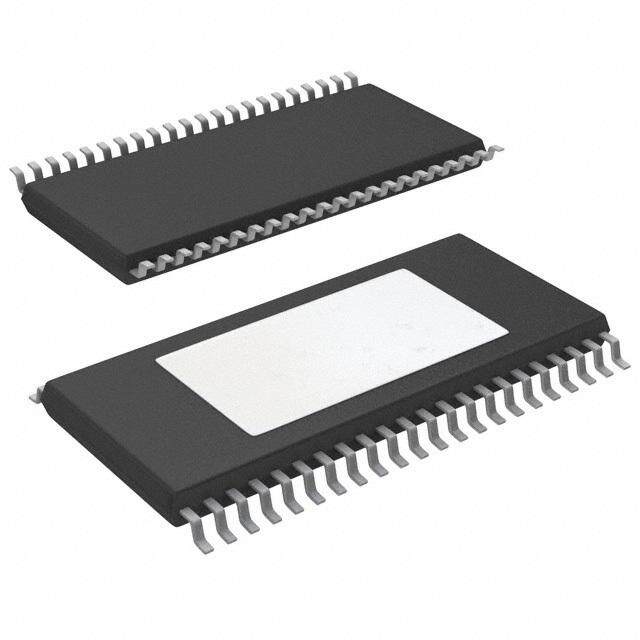



- 商务部:美国ITC正式对集成电路等产品启动337调查
- 曝三星4nm工艺存在良率问题 高通将骁龙8 Gen1或转产台积电
- 太阳诱电将投资9.5亿元在常州建新厂生产MLCC 预计2023年完工
- 英特尔发布欧洲新工厂建设计划 深化IDM 2.0 战略
- 台积电先进制程称霸业界 有大客户加持明年业绩稳了
- 达到5530亿美元!SIA预计今年全球半导体销售额将创下新高
- 英特尔拟将自动驾驶子公司Mobileye上市 估值或超500亿美元
- 三星加码芯片和SET,合并消费电子和移动部门,撤换高东真等 CEO
- 三星电子宣布重大人事变动 还合并消费电子和移动部门
- 海关总署:前11个月进口集成电路产品价值2.52万亿元 增长14.8%
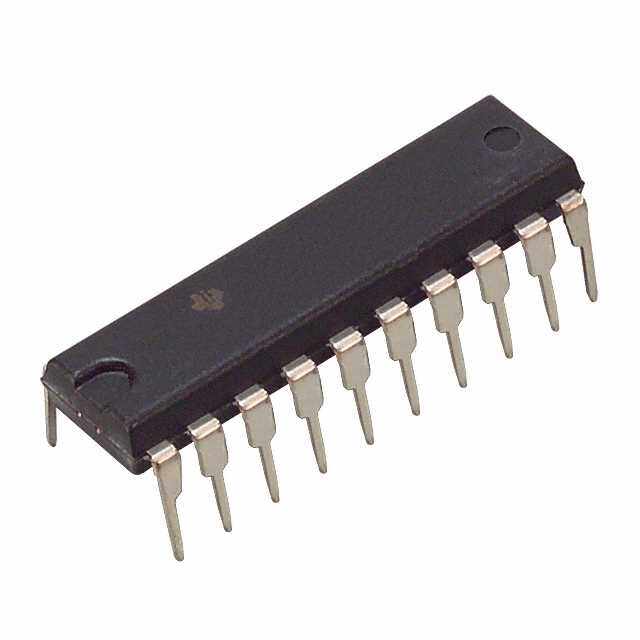
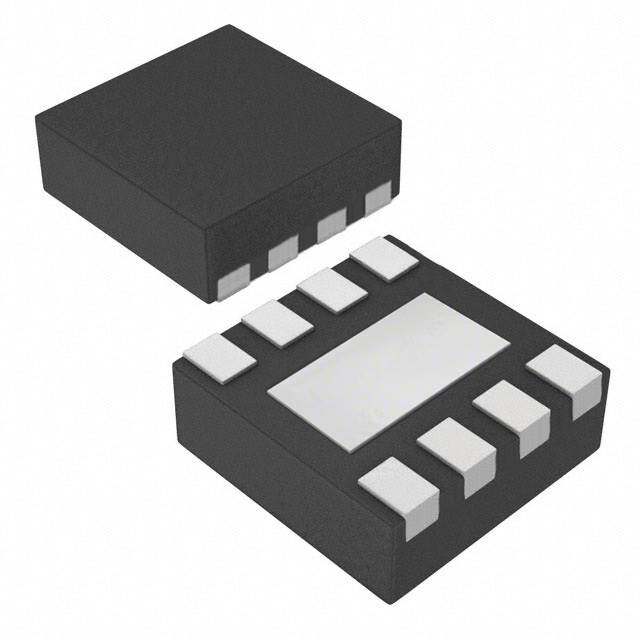


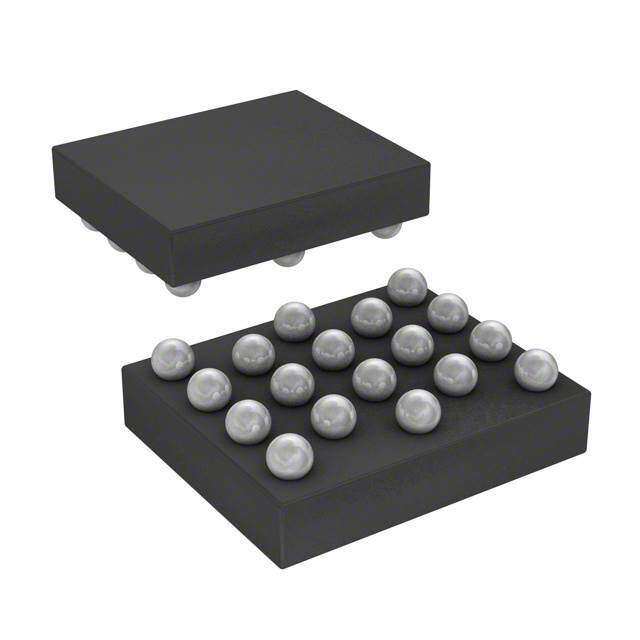

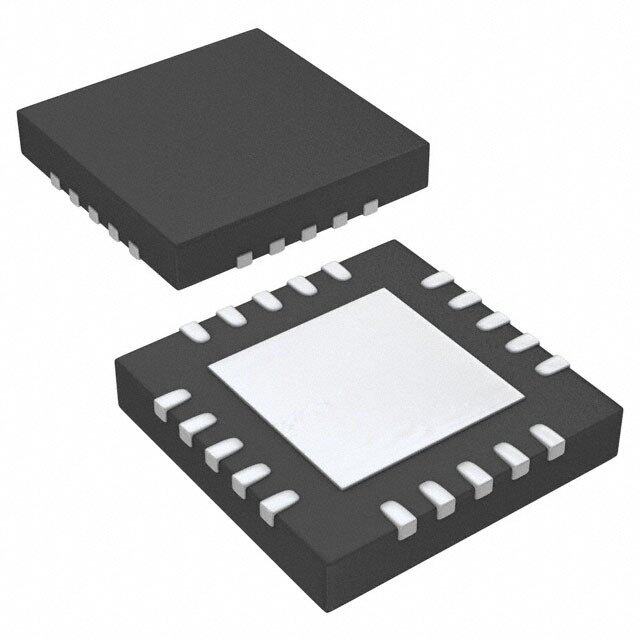
PDF Datasheet 数据手册内容提取
LM4876 www.ti.com SNAS054E–FEBRUARY2000–REVISEDMAY2013 LM4876 1.1W Audio Power Amplifier with Logic Low Shutdown CheckforSamples:LM4876 FEATURES DESCRIPTION 1 • DoesNotRequireOutputCouplingCapacitors, The LM4876 is a single 5V supply bridge-connected 2 audiopoweramplifiercapableofdelivering1.1W(typ) BootstrapCapacitors,OrSnubberCircuits ofcontinuousaveragepowertoan8Ω loadwith0.5% • 10-pinVSSOPand8-pinSOICPackages THD+N. • Unity-GainStable Like other audio amplifiers in the Boomer series, the • ExternalGainSet LM4876 is designed specifically to provide high quality output power with a minimal amount of APPLICATIONS external components. The LM4876 does not require output coupling capacitors, bootstrap capacitors, or • MobilePhones snubber networks. It is perfectly suited for low-power • PortableComputers portablesystems. • DesktopComputers The LM4876 features an active low externally • Low-VoltageAudioSystems controlled, micro-power shutdown mode. Additionally, the LM4876 features an internal thermal shutdown KEY SPECIFICATIONS protection mechanism. For PCB space efficiency, the LM4876 is available in VSSOP and SOIC surface • THD+Nat1kHzfor1WContinuousAverage mountpackages. OutputPowerinto8Ω 0.5%(max) • OutputPowerAt1kHzInto8Ω with10% The unity-gain stable LM4876's closed loop gain is setusingexternalresistors. THD+N1.5W(typ) • ShutdownCurrent0.01µA(typ) • SupplyVoltageRange2.0Vto5.5V Typical Application Figure1. TypicalLM4876AudioAmplifierApplicationCircuit Numbersin()arespecifictothe10-pinVSSOPpackage. 1 Pleasebeawarethatanimportantnoticeconcerningavailability,standardwarranty,anduseincriticalapplicationsof TexasInstrumentssemiconductorproductsanddisclaimerstheretoappearsattheendofthisdatasheet. Alltrademarksarethepropertyoftheirrespectiveowners. 2 PRODUCTIONDATAinformationiscurrentasofpublicationdate. Copyright©2000–2013,TexasInstrumentsIncorporated Products conform to specifications per the terms of the Texas Instruments standard warranty. Production processing does not necessarilyincludetestingofallparameters.
LM4876 SNAS054E–FEBRUARY2000–REVISEDMAY2013 www.ti.com Connection Diagrams Figure2. VSSOPPackage– TopView SeePackageNumberDGS Figure3. SOICPackage–TopView SeePackageNumberD Thesedeviceshavelimitedbuilt-inESDprotection.Theleadsshouldbeshortedtogetherorthedeviceplacedinconductivefoam duringstorageorhandlingtopreventelectrostaticdamagetotheMOSgates. Absolute Maximum Ratings(1)(2) SupplyVoltage 6.0V StorageTemperature −65°Cto+150°C InputVoltage −0.3VtoV +0.3V DD PowerDissipation(3) InternallyLimited ESDSusceptibility(4) 2500V ESDSusceptibility(5) 250V JunctionTemperature 150°C VaporPhase(60sec.) 215°C SolderingInformation SmallOutlinePackage Infrared(15sec.) 220°C θ (typ)—DGS 56°C/W JC θ (typ)—DGS 210°C/W JA θ (typ)—D 35°C/W JC θ (typ)—D 140°C/W JA (1) IfMilitary/Aerospacespecifieddevicesarerequired,pleasecontacttheTexasInstruments'SalesOffice/Distributorsforavailabilityand specifications. (2) AbsoluteMaximumRatingsindicatelimitsbeyondwhichdamagetothedevicemayoccur.OperatingRatingsindicateconditionsfor whichthedeviceisfunctional,butdonotensurespecificperformancelimits.ElectricalCharacteristicsstateDCandACelectrical specificationsunderparticulartestconditionsthatensurespecificperformancelimits.Thisassumesthatthedeviceoperateswithinthe OperatingRatings.Specificationsarenotensuredforparameterswherenolimitisgiven.Thetypicalvalue,however,isagood indicationofdeviceperformance. (3) ThemaximumpowerdissipationmustbederatedatelevatedtemperaturesandisdictatedbyT ,θ ,andtheambienttemperature JMAX JA T .ThemaximumallowablepowerdissipationisP =(T –T )/θ orthenumbergiveninAbsoluteMaximumRatings,whichever A DMAX JMAX A JA islower.FortheLM4876,T =150°C.Thetypicaljunction-to-ambientthermalresistanceis140°C/WfortheDpackageand JMAX 210°C/WfortheDGSpackage. (4) Humanbodymodel,100pFdischargedthrougha1.5kΩresistor. (5) MachineModel,220pF–240pFdischargedthroughallpins. Operating Ratings TemperatureRange T ≤T ≤T −40°C≤T ≤85° MIN A MAX A SupplyVoltage 2.0V≤V ≤5.5V DD 2 SubmitDocumentationFeedback Copyright©2000–2013,TexasInstrumentsIncorporated ProductFolderLinks:LM4876
LM4876 www.ti.com SNAS054E–FEBRUARY2000–REVISEDMAY2013 Electrical Characteristics(1)(2) ThefollowingspecificationsapplyforV =5Vunlessotherwisespecified.LimitsapplyforT =25°C. DD A LM4876 Units Symbol Parameter Conditions Typical (3) Limit (4) (Limits) 2.0 V(min) V SupplyVoltage DD 5.5 V(max) I QuiescentPowerSupplyCurrent V =0V,I =0A 6.5 10.0 mA(max) DD IN o I ShutdownCurrent V =0V 0.01 2 µA(max) SD PIN1 V OutputOffsetVoltage V =0V 5 50 mV(max) OS IN THD=0.5%(max);f=1kHz;R =8Ω 1.10 W(min) L P OutputPower 1.0 o THD+N=10%;f=1kHz;R =8Ω 1.5 W L THD+N P =1Wrms;A =2;20Hz≤f≤20 0.25 % TotalHarmonicDistortion+Noise o VD kHz;R =8Ω L PSRR PowerSupplyRejectionRatio V =4.9Vto5.1V 65 dB DD (1) Allvoltagesaremeasuredwithrespecttothegroundpin,unlessotherwisespecified. (2) AbsoluteMaximumRatingsindicatelimitsbeyondwhichdamagetothedevicemayoccur.OperatingRatingsindicateconditionsfor whichthedeviceisfunctional,butdonotensurespecificperformancelimits.ElectricalCharacteristicsstateDCandACelectrical specificationsunderparticulartestconditionsthatensurespecificperformancelimits.Thisassumesthatthedeviceoperateswithinthe OperatingRatings.Specificationsarenotensuredforparameterswherenolimitisgiven.Thetypicalvalue,however,isagood indicationofdeviceperformance. (3) Typicalsaremeasuredat25°Candrepresenttheparametricnorm. (4) LimitsareensuredtoAOQL(AverageOutgoingQualityLevel). Electrical Characteristics V = 5/3.3/2.6V DD LM4876 Units Symbol Parameter Conditions Typical(1) Limit(2) (Limits) V ShutdownInputVoltageHigh 1.2 V(min) IH V ShutdownInputVoltageLow 0.4 V(max) IL (1) Typicalsaremeasuredat25°Candrepresenttheparametricnorm. (2) LimitsareensuredtoAOQL(AverageOutgoingQualityLevel). External Components Description (Figure1) Components FunctionalDescription 1. R Invertinginputresistancewhichsetstheclosed-loopgaininconjunctionwithR.Thisresistoralsoformsahighpass i f filterwithC atf =1/(2πRC). i C i i 2. C InputcouplingcapacitorwhichblockstheDCvoltageattheamplifiersinputterminals.Alsocreatesahighpassfilterwith i R atf =1/(2πRC).Refertothesection,SELECTINGPROPEREXTERNALCOMPONENTS,foranexplanationof i C i i howtodeterminethevalueofC. i 3. R Feedbackresistancewhichsetstheclosed-loopgaininconjunctionwithR. f i 4. C Supplybypasscapacitorwhichprovidespowersupplyfiltering.RefertothePOWERSUPPLYBYPASSINGsectionfor S informationconcerningproperplacementandselectionofthesupplybypasscapacitor. 5. C Bypasspincapacitorwhichprovideshalf-supplyfiltering.Refertothesection,SELECTINGPROPEREXTERNAL B COMPONENTS,forinformationconcerningproperplacementandselectionofC . B Copyright©2000–2013,TexasInstrumentsIncorporated SubmitDocumentationFeedback 3 ProductFolderLinks:LM4876
LM4876 SNAS054E–FEBRUARY2000–REVISEDMAY2013 www.ti.com Typical Performance Characteristics THD+NvsFrequency THD+NvsFrequency Figure4. Figure5. THD+NvsFrequency THD+NvsOutputPower Figure6. Figure7. THD+NvsOutputPower THD+NvsOutputPower Figure8. Figure9. 4 SubmitDocumentationFeedback Copyright©2000–2013,TexasInstrumentsIncorporated ProductFolderLinks:LM4876
LM4876 www.ti.com SNAS054E–FEBRUARY2000–REVISEDMAY2013 Typical Performance Characteristics (continued) OutputPowervsSupplyVoltage OutputPowervsSupplyVoltage Figure10. Figure11. OutputPowervsSupplyVoltage OutputPowervsSupplyVoltage Figure12. Figure13. OutputPowervsLoadResistance PowerDissipationvsOutputPower Figure14. Figure15. Copyright©2000–2013,TexasInstrumentsIncorporated SubmitDocumentationFeedback 5 ProductFolderLinks:LM4876
LM4876 SNAS054E–FEBRUARY2000–REVISEDMAY2013 www.ti.com Typical Performance Characteristics (continued) PowerDeratingCurve ClippingVoltagevsSupplyVoltage Figure16. Figure17. NoiseFloor FrequencyResponsevsInputCapacitorSize Figure18. Figure19. PowerSupplyRejectionRatio OpenLoopFrequencyResponse Figure20. Figure21. 6 SubmitDocumentationFeedback Copyright©2000–2013,TexasInstrumentsIncorporated ProductFolderLinks:LM4876
LM4876 www.ti.com SNAS054E–FEBRUARY2000–REVISEDMAY2013 Typical Performance Characteristics (continued) SupplyCurrentvsShutdownVoltage SupplyCurrentvsSupplyVoltage LM4876@VDD=5/3.3/2.6Vdc Figure22. Figure23. Copyright©2000–2013,TexasInstrumentsIncorporated SubmitDocumentationFeedback 7 ProductFolderLinks:LM4876
LM4876 SNAS054E–FEBRUARY2000–REVISEDMAY2013 www.ti.com APPLICATION INFORMATION BRIDGE CONFIGURATION EXPLANATION As shown in Figure 1, the LM4876 consists of two operational amplifiers. External resistors R and R set the f i closed-loop gain of Amp1, whereas two internal 40kΩ resistors set Amp2's gain at -1. The LM4876 drives a load, suchasaspeaker,connectedbetweenthetwoamplifieroutputs,V 1andV 2. o o Figure 1 shows that the Amp1 output serves as the Amp2 input, which results in both amplifiers producing signals identical in magnitude, but 180° out of phase. Taking advantage of this phase difference, a load is placed between V 1 and V 2 and driven differentially (commonly referred to as "bridge mode"). This results in a o o differentialgainof A =2*(R/R) (1) VD f i Bridge mode is different from single-ended amplifiers that drive loads connected between a single amplifier's output and ground. For a given supply voltage, bridge mode has a distinct advantage over the single-ended configuration: its differential output doubles the voltage swing across the load. This results in four times the output power when compared to a single-ended amplifier under the same conditions. This increase in attainable output power assumes that the amplifier is not current limited or that the output signal is not clipped. To ensure minimum output signal clipping when choosing an amplifier's closed-loop gain, refer to the AUDIO POWER AMPLIFIERDESIGNsection. AnotheradvantageofthedifferentialbridgeoutputisnonetDCvoltageacrosstheload.Thisresultsfrombiasing V 1 and V 2 at half-supply. This eliminates the coupling capacitor that single supply, single-ended amplifiers o o require. Eliminating an output coupling capacitor in a single-ended configuration forces a single-supply amplifier's half-supply bias voltage across the load. The current flow created by the half-supply bias voltage increases internalICpowerdissipationandmaypermanentlydamageloadssuchasspeakers. POWER DISSIPATION Power dissipation is a major concern when designing a successful bridged or single-ended amplifier. Equation 2 states the maximum power dissipation point for a single-ended amplifier operating at a given supply voltage and drivingaspecifiedoutputload. P =(V )2/(2π2R )Single-Ended (2) DMAX DD L However, a direct consequence of the increased power delivered to the load by a bridge amplifier is higher internalpowerdissipationforthesameconditions. The LM4876 has two operational amplifiers in one package and the maximum internal power dissipation is four times that of a single-ended amplifier. Equation 3 states the maximum power dissipation for a bridge amplifier. However, even with this substantial increase in power dissipation, the LM4876 does not require heatsinking. FromEquation3,assuminga5Vpowersupplyandan8Ω load,themaximumpowerdissipationpointis633mW. P =4*(V )2/(2π2R )BridgeMode (3) DMAX DD L The maximum power dissipation point given by Equation 3 must not exceed the power dissipation given by Equation4: P =(T -T )/θ (4) DMAX JMAX A JA The LM4876's T = 150°C. In the D package, the LM4876's θ is 140°C/W. At any given ambient JMAX JA temperature T , use Equation 4 to find the maximum internal power dissipation supported by the IC packaging. A Rearranging Equation 4 results in Equation 5. This equation gives the maximum ambient temperature that still allowsmaximumpowerdissipationwithoutviolatingtheLM4876'smaximumjunctiontemperature. T =T -P θ (5) A JMAX DMAX JA For a typical application with a 5V power supply and an 8W load, the maximum ambient temperature that allows maximumpowerdissipationwithoutexceedingthemaximumjunctiontemperatureisapproximately61°C. T =P θ +T (6) JMAX DMAX JA A 8 SubmitDocumentationFeedback Copyright©2000–2013,TexasInstrumentsIncorporated ProductFolderLinks:LM4876
LM4876 www.ti.com SNAS054E–FEBRUARY2000–REVISEDMAY2013 FortheVSSOP10Apackage,θ =210°C/W.Equation6showsthatT ,fortheVSSOP10package,is158°C JA JMAX for an ambient temperature of 25°C and using the same 5V power supply and an 8Ω load. This violates the LM4876's 150°C maximum junction temperature when using the VSSOP10A package. Reduce the junction temperature by reducing the power supply voltage or increasing the load resistance. Further, allowance should be made for increased ambient temperatures. To achieve the same 61°C maximum ambient temperature found for the SOIC8 package, the VSSOP10 packaged part should operate on a 4.1V supply voltage when driving an 8Ω load. Alternatively, a 5V supply can be used when driving a load with a minimum resistance of 12Ω for the same61°Cmaximumambienttemperature. Fully charged Li-ion batteries typically supply 4.3V to portable applications such as cell phones. This supply voltage allows the LM4876 to drive loads with a minimum resistance of 9Ω without violating the maximum junctiontemperaturewhenthemaximumambienttemperatureis61°C. The above examples assume that a device is a surface mount part operating around the maximum power dissipation point. Since internal power dissipation is a function of output power, higher ambient temperatures are allowedasoutputpowerordutycycledecreases. If the result of Equation 3 is greater than that of Equation 4, then decrease the supply voltage, increase the load impedance, or reduce the ambient temperature. If these measures are insufficient, a heat sink can be added to reduce θ . The heat sink can be created using additional copper area around the package, with connections to JA the ground pin(s), supply pin and amplifier output pins. When adding a heat sink, the θ is the sum of θ , θ , JA JC CS and θ . ( θ is the junction-to-case thermal impedance, θ is the case-to-sink thermal impedance, and θ is SA JC CS SA the sink-to-ambient thermal impedance.) Refer to the Typical Performance Characteristics curves for power dissipationinformationatloweroutputpowerlevels. POWER SUPPLY BYPASSING As with any power amplifier, proper supply bypassing is critical for low noise performance and high power supply rejection. Applications that employ a 5V regulator typically use a 10µF in parallel with a 0.1µF filter capacitors to stabilize the regulator's output, reduce noise on the supply line, and improve the supply's transient response. However, their presence does not eliminate the need for local bypass capacitance at the LM4876's supply pins. Keep the length of leads and traces that connect capacitors between the LM4876's power supply pin and ground as short as possible. Connecting a 1µF capacitor between the BYPASS pin and ground improves the internal bias voltage's stability and improves the amplifier's PSRR. The PSRR improvements increase as the bypass pin capacitor value increases. Too large, however, and the amplifier's click and pop performance can be compromised. The selection of bypass capacitor values, especially C , depends on desired PSRR requirements, B click and pop performance (as explained in the section, SELECTING PROPER EXTERNAL COMPONENTS), systemcost,andsizeconstraints. MICRO-POWER SHUTDOWN The voltage applied to the SHUTDOWN pin controls the LM4876's shutdown function. Activate micro-power shutdown by applying a voltage below 400mV to the SHUTDOWN pin. When active, the LM4876's micro-power shutdown feature turns off the amplifier's bias circuitry, reducing the supply current. Though the LM4876 is in shutdown when 400mV is applied to the SHUTDOWN pin, the supply current may be higher than 0.01µA (typ) shutdown current. Therefore, for the lowest supply current during shutdown, connect the SHUTDOWN pin to ground. The relationship between the supply voltage, the shutdown current, and the voltage applied to the SHUTDOWNpinisshowninTypicalPerformanceCharacteristicscurves. There are a few ways to control the micro-power shutdown. These include using a single-pole, single-throw switch, a microprocessor, or a microcontroller. When using a switch, connect an external pull-down resistor between the SHUTDOWN pin and GND. Connect the switch between the SHUTDOWN pin and V . Select CC normal amplifier operation by closing the switch. Opening the switch connects the SHUTDOWN pin to GND through the pull-down resistor, activating micro-power shutdown. The switch and resistor ensure that the SHUTDOWN pin will not float. This prevents unwanted state changes. In a system with a microprocessor or a microcontroller, use a digital output to apply the control voltage to the SHUTDOWN pin. Driving the SHUTDOWN pinwithactivecircuitryeliminatesthepulldownresistor. Copyright©2000–2013,TexasInstrumentsIncorporated SubmitDocumentationFeedback 9 ProductFolderLinks:LM4876
LM4876 SNAS054E–FEBRUARY2000–REVISEDMAY2013 www.ti.com SELECTING PROPER EXTERNAL COMPONENTS Optimizing the LM4876's performance requires properly selecting external components. Though the LM4876 operates well when using external components with wide tolerances, best performance is achieved by optimizing componentvalues. TheLM4876isunity-gainstable,givingadesignermaximumdesignflexibility.Thegainshouldbesettonomore than a given application requires. This allows the amplifier to achieve minimum THD+N and maximum signal-to- noise ratio. These parameters are compromised as the closed-loop gain increases. However, low gain demands input signals with greater voltage swings to achieve maximum output power. Fortunately, many signal sources such as audio CODECs have outputs of 1V (2.83V ). Please refer to the AUDIO POWER AMPLIFIER RMS P-P DESIGNsectionformoreinformationonselectingthepropergain. InputCapacitorValueSelection Amplifyingthelowestaudiofrequenciesrequireshighvalueinputcouplingcapacitor(C inFigure1).Ahighvalue i capacitor can be expensive and may compromise space efficiency in portable designs. In many cases, however, the speakers used in portable systems, whether internal or external, have little ability to reproduce signals below 150 Hz. Applications using speakers with this limited low frequency response reap little improvement by using a largeinputcapacitor. Besides affecting system cost and size, C also affects the LM4876's click and pop performance. When the i supplyvoltageisfirstapplied,atransient(pop)iscreatedasthechargeontheinputcapacitorchangesfromzero to a quiescent state. The magnitude of the pop is directly proportional to the input capacitor's size. Higher value capacitors need more time to reach a quiescent DC voltage (usually V /2) when charged with a fixed current. CC The amplifier's output charges the input capacitor through the feedback resistor, R. Thus, pops can be f minimized by selecting an input capacitor value that is no higher than necessary to meet the desired -3dB frequency. As shown in Figure 1, the input resistor (R) and the input capacitor, C produce a -3dB high pass filter cutoff I I frequencythatisfoundusingEquation7. f =2πR C (7) -3dB IN I Asanexamplewhenusingaspeakerwithalowfrequencylimitof150Hz,Equation7givesavalueofC equalto i 0.1µF.The0.22µFC showninFigure1allowsforaspeakerwhoseresponseextendsdownto75Hz. i BypassCapacitorValueSelection Besides minimizing the input capacitor size, careful consideration should be paid to value of, C , the capacitor B connected to the BYPASS pin. Since C determines how fast the LM4876 settles to quiescent operation, its B value is critical when minimizing turn-on pops. The slower the LM4876's outputs ramp to their quiescent DC voltage (nominally 1/2 V ), the smaller the turn-on pop. Choosing C equal to 1.0µF along with a small value of DD B C (in the range of 0.1µF to 0.39µF), produces a click-less and pop-less shutdown function. As discussed above, i choosingC assmallaspossiblehelpsminimizeclicksandpops. i AUDIO POWER AMPLIFIER DESIGN AudioAmplifierDesign:Driving1Wintoan8Ω Load Thefollowingarethedesiredoperationalparameters: PowerOutput 1W RMS LoadImpedance 8Ω InputLevel 1V RMS InputImpedance 20kΩ Bandwidth 100Hz–20kHz±0.25dB 10 SubmitDocumentationFeedback Copyright©2000–2013,TexasInstrumentsIncorporated ProductFolderLinks:LM4876
LM4876 www.ti.com SNAS054E–FEBRUARY2000–REVISEDMAY2013 The design begins by specifying the minimum supply voltage necessary to obtain the specified output power. One way to find the minimum supply voltage is to use the Output Power vs Supply Voltage curve in the Typical Performance Characteristics section. Another way, using Equation 8, is to calculate the peak output voltage necessarytoachievethedesiredoutputpowerforagivenloadimpedance.Toaccountfortheamplifier'sdropout voltage, two additional voltages, based on the Dropout Voltage vs Supply Voltage in the Typical Performance Characteristicscurves,mustbeaddedtotheresultobtainedbyEquation8.ThisresultsinEquation9. (8) V ≥(V +(V +V )) (9) CC OUTPEAK ODTOP ODBOT The Output Power vs Supply Voltage graph for an 8Ω load indicates a minimum supply voltage of 4.6V. This is easily met by the commonly used 5V supply voltage. The additional voltage creates the benefit of headroom, allowing the LM4876 to produce peak output power in excess of 1W without clipping or other audible distortion. The choice of supply voltage must also not create a violation of maximum power dissipation as explained above inthePOWERDISSIPATIONsection. After satisfying the LM4876's power dissipation requirements, the minimum differential gain is found using Equation10. (10) Thus,aminimumgainof2.83allowstheLM4876'storeachfulloutputswingandmaintainlownoiseandTHD+N performance.Forthisexample,letA =3. VD The amplifier's overall gain is set using the input (R) and feedback (R) resistors. With the desired input i f impedancesetat20kΩ,thefeedbackresistorisfoundusingEquation11. R/R =A /2 f i VD where • ThevalueofR is30kΩ. (11) f The last step in this design example is setting the amplifier's -3dB low frequency bandwidth. To achieve the desired ±0.25dB pass band magnitude variation limit, the low frequency response must extend to at least one- fifth the lower bandwidth limit and the high frequency response must extend to at least five times the upper bandwidthlimit.Theresultsisan f =100Hz/5=20Hz L andan F =20kHz*5=100kHz H As mentioned in the External Components Description section, R and C create a highpass filter that sets the i i amplifier'slowerbandpassfrequencylimit.Findthecouplingcapacitor'svalueusingEquation12. Ci≥1/(2πRif ) (12) L Theresultis 1/(2π*20kΩ*20Hz)=0.398µF. Usea0.39µFcapacitor,thecloseststandardvalue. The product of the desired high frequency cutoff (100kHz in this example) and the differential gain, A , VD determines the upper passband response limit. With A = 3 and f = 100kHz, the closed-loop gain bandwidth VD H product (GBWP) is 150kHz. This is less than the LM4876's 4MHz GBWP. With this margin, the amplifier can be usedindesignsthatrequiremoredifferentialgainandavoidperformance-restrictingbandwidthlimitations. Copyright©2000–2013,TexasInstrumentsIncorporated SubmitDocumentationFeedback 11 ProductFolderLinks:LM4876
LM4876 SNAS054E–FEBRUARY2000–REVISEDMAY2013 www.ti.com REVISION HISTORY ChangesfromRevisionD(May2013)toRevisionE Page • ChangedlayoutofNationalDataSheettoTIformat.......................................................................................................... 11 12 SubmitDocumentationFeedback Copyright©2000–2013,TexasInstrumentsIncorporated ProductFolderLinks:LM4876
PACKAGE OPTION ADDENDUM www.ti.com 6-Feb-2020 PACKAGING INFORMATION Orderable Device Status Package Type Package Pins Package Eco Plan Lead/Ball Finish MSL Peak Temp Op Temp (°C) Device Marking Samples (1) Drawing Qty (2) (6) (3) (4/5) LM4876M/NOPB ACTIVE SOIC D 8 95 Green (RoHS SN Level-1-260C-UNLIM -40 to 85 LM487 & no Sb/Br) 6M LM4876MM/NOPB ACTIVE VSSOP DGS 10 1000 Green (RoHS SN Level-1-260C-UNLIM -40 to 85 G76 & no Sb/Br) LM4876MX/NOPB ACTIVE SOIC D 8 2500 Green (RoHS SN Level-1-260C-UNLIM -40 to 85 LM487 & no Sb/Br) 6M (1) The marketing status values are defined as follows: ACTIVE: Product device recommended for new designs. LIFEBUY: TI has announced that the device will be discontinued, and a lifetime-buy period is in effect. NRND: Not recommended for new designs. Device is in production to support existing customers, but TI does not recommend using this part in a new design. PREVIEW: Device has been announced but is not in production. Samples may or may not be available. OBSOLETE: TI has discontinued the production of the device. (2) RoHS: TI defines "RoHS" to mean semiconductor products that are compliant with the current EU RoHS requirements for all 10 RoHS substances, including the requirement that RoHS substance do not exceed 0.1% by weight in homogeneous materials. Where designed to be soldered at high temperatures, "RoHS" products are suitable for use in specified lead-free processes. TI may reference these types of products as "Pb-Free". RoHS Exempt: TI defines "RoHS Exempt" to mean products that contain lead but are compliant with EU RoHS pursuant to a specific EU RoHS exemption. Green: TI defines "Green" to mean the content of Chlorine (Cl) and Bromine (Br) based flame retardants meet JS709B low halogen requirements of <=1000ppm threshold. Antimony trioxide based flame retardants must also meet the <=1000ppm threshold requirement. (3) MSL, Peak Temp. - The Moisture Sensitivity Level rating according to the JEDEC industry standard classifications, and peak solder temperature. (4) There may be additional marking, which relates to the logo, the lot trace code information, or the environmental category on the device. (5) Multiple Device Markings will be inside parentheses. Only one Device Marking contained in parentheses and separated by a "~" will appear on a device. If a line is indented then it is a continuation of the previous line and the two combined represent the entire Device Marking for that device. (6) Lead/Ball Finish - Orderable Devices may have multiple material finish options. Finish options are separated by a vertical ruled line. Lead/Ball Finish values may wrap to two lines if the finish value exceeds the maximum column width. Important Information and Disclaimer:The information provided on this page represents TI's knowledge and belief as of the date that it is provided. TI bases its knowledge and belief on information provided by third parties, and makes no representation or warranty as to the accuracy of such information. Efforts are underway to better integrate information from third parties. TI has taken and continues to take reasonable steps to provide representative and accurate information but may not have conducted destructive testing or chemical analysis on incoming materials and chemicals. TI and TI suppliers consider certain information to be proprietary, and thus CAS numbers and other limited information may not be available for release. Addendum-Page 1
PACKAGE OPTION ADDENDUM www.ti.com 6-Feb-2020 In no event shall TI's liability arising out of such information exceed the total purchase price of the TI part(s) at issue in this document sold by TI to Customer on an annual basis. Addendum-Page 2
PACKAGE MATERIALS INFORMATION www.ti.com 12-Aug-2013 TAPE AND REEL INFORMATION *Alldimensionsarenominal Device Package Package Pins SPQ Reel Reel A0 B0 K0 P1 W Pin1 Type Drawing Diameter Width (mm) (mm) (mm) (mm) (mm) Quadrant (mm) W1(mm) LM4876MM/NOPB VSSOP DGS 10 1000 178.0 12.4 5.3 3.4 1.4 8.0 12.0 Q1 LM4876MX/NOPB SOIC D 8 2500 330.0 12.4 6.5 5.4 2.0 8.0 12.0 Q1 PackMaterials-Page1
PACKAGE MATERIALS INFORMATION www.ti.com 12-Aug-2013 *Alldimensionsarenominal Device PackageType PackageDrawing Pins SPQ Length(mm) Width(mm) Height(mm) LM4876MM/NOPB VSSOP DGS 10 1000 210.0 185.0 35.0 LM4876MX/NOPB SOIC D 8 2500 367.0 367.0 35.0 PackMaterials-Page2
PACKAGE OUTLINE DGS0010A VSSOP - 1.1 mm max height SCALE 3.200 SMALL OUTLINE PACKAGE C 5.05 4.75 TYP SEATING PLANE A PIN 1 ID 0.1 C AREA 8X 0.5 10 1 3.1 2X 2.9 NOTE 3 2 5 6 0.27 10X 0.17 B 3.1 0.1 C A B 1.1 MAX 2.9 NOTE 4 0.23 TYP SEE DETAIL A 0.13 0.25 GAGE PLANE 0.15 0.7 0 - 8 0.05 0.4 DETAIL A TYPICAL 4221984/A 05/2015 NOTES: 1. All linear dimensions are in millimeters. Any dimensions in parenthesis are for reference only. Dimensioning and tolerancing per ASME Y14.5M. 2. This drawing is subject to change without notice. 3. This dimension does not include mold flash, protrusions, or gate burrs. Mold flash, protrusions, or gate burrs shall not exceed 0.15 mm per side. 4. This dimension does not include interlead flash. Interlead flash shall not exceed 0.25 mm per side. 5. Reference JEDEC registration MO-187, variation BA. www.ti.com
EXAMPLE BOARD LAYOUT DGS0010A VSSOP - 1.1 mm max height SMALL OUTLINE PACKAGE 10X (1.45) 10X (0.3) SYMM (R0.05) TYP 1 10 SYMM 8X (0.5) 5 6 (4.4) LAND PATTERN EXAMPLE SCALE:10X SOOPLEDNEINRG MASK METAL MSOELTDAEL RU NMDAESRK SOOPLEDNEINRG MASK 0.05 MAX 0.05 MIN ALL AROUND ALL AROUND NON SOLDER MASK SOLDER MASK DEFINED DEFINED SOLDER MASK DETAILS NOT TO SCALE 4221984/A 05/2015 NOTES: (continued) 6. Publication IPC-7351 may have alternate designs. 7. Solder mask tolerances between and around signal pads can vary based on board fabrication site. www.ti.com
EXAMPLE STENCIL DESIGN DGS0010A VSSOP - 1.1 mm max height SMALL OUTLINE PACKAGE 10X (1.45) SYMM (R0.05) TYP 10X (0.3) 1 10 SYMM 8X (0.5) 5 6 (4.4) SOLDER PASTE EXAMPLE BASED ON 0.125 mm THICK STENCIL SCALE:10X 4221984/A 05/2015 NOTES: (continued) 8. Laser cutting apertures with trapezoidal walls and rounded corners may offer better paste release. IPC-7525 may have alternate design recommendations. 9. Board assembly site may have different recommendations for stencil design. www.ti.com
PACKAGE OUTLINE D0008A SOIC - 1.75 mm max height SCALE 2.800 SMALL OUTLINE INTEGRATED CIRCUIT C SEATING PLANE .228-.244 TYP [5.80-6.19] .004 [0.1] C A PIN 1 ID AREA 6X .050 [1.27] 8 1 2X .189-.197 [4.81-5.00] .150 NOTE 3 [3.81] 4X (0 -15 ) 4 5 8X .012-.020 B .150-.157 [0.31-0.51] .069 MAX [3.81-3.98] .010 [0.25] C A B [1.75] NOTE 4 .005-.010 TYP [0.13-0.25] 4X (0 -15 ) SEE DETAIL A .010 [0.25] .004-.010 0 - 8 [0.11-0.25] .016-.050 [0.41-1.27] DETAIL A (.041) TYPICAL [1.04] 4214825/C 02/2019 NOTES: 1. Linear dimensions are in inches [millimeters]. Dimensions in parenthesis are for reference only. Controlling dimensions are in inches. Dimensioning and tolerancing per ASME Y14.5M. 2. This drawing is subject to change without notice. 3. This dimension does not include mold flash, protrusions, or gate burrs. Mold flash, protrusions, or gate burrs shall not exceed .006 [0.15] per side. 4. This dimension does not include interlead flash. 5. Reference JEDEC registration MS-012, variation AA. www.ti.com
EXAMPLE BOARD LAYOUT D0008A SOIC - 1.75 mm max height SMALL OUTLINE INTEGRATED CIRCUIT 8X (.061 ) [1.55] SYMM SEE DETAILS 1 8 8X (.024) [0.6] SYMM (R.002 ) TYP [0.05] 5 4 6X (.050 ) [1.27] (.213) [5.4] LAND PATTERN EXAMPLE EXPOSED METAL SHOWN SCALE:8X SOLDER MASK SOLDER MASK METAL OPENING OPENING METAL UNDER SOLDER MASK EXPOSED METAL EXPOSED METAL .0028 MAX .0028 MIN [0.07] [0.07] ALL AROUND ALL AROUND NON SOLDER MASK SOLDER MASK DEFINED DEFINED SOLDER MASK DETAILS 4214825/C 02/2019 NOTES: (continued) 6. Publication IPC-7351 may have alternate designs. 7. Solder mask tolerances between and around signal pads can vary based on board fabrication site. www.ti.com
EXAMPLE STENCIL DESIGN D0008A SOIC - 1.75 mm max height SMALL OUTLINE INTEGRATED CIRCUIT 8X (.061 ) [1.55] SYMM 1 8 8X (.024) [0.6] SYMM (R.002 ) TYP [0.05] 5 4 6X (.050 ) [1.27] (.213) [5.4] SOLDER PASTE EXAMPLE BASED ON .005 INCH [0.125 MM] THICK STENCIL SCALE:8X 4214825/C 02/2019 NOTES: (continued) 8. Laser cutting apertures with trapezoidal walls and rounded corners may offer better paste release. IPC-7525 may have alternate design recommendations. 9. Board assembly site may have different recommendations for stencil design. www.ti.com
IMPORTANTNOTICEANDDISCLAIMER TI PROVIDES TECHNICAL AND RELIABILITY DATA (INCLUDING DATASHEETS), DESIGN RESOURCES (INCLUDING REFERENCE DESIGNS), APPLICATION OR OTHER DESIGN ADVICE, WEB TOOLS, SAFETY INFORMATION, AND OTHER RESOURCES “AS IS” AND WITH ALL FAULTS, AND DISCLAIMS ALL WARRANTIES, EXPRESS AND IMPLIED, INCLUDING WITHOUT LIMITATION ANY IMPLIED WARRANTIES OF MERCHANTABILITY, FITNESS FOR A PARTICULAR PURPOSE OR NON-INFRINGEMENT OF THIRD PARTY INTELLECTUAL PROPERTY RIGHTS. These resources are intended for skilled developers designing with TI products. You are solely responsible for (1) selecting the appropriate TI products for your application, (2) designing, validating and testing your application, and (3) ensuring your application meets applicable standards, and any other safety, security, or other requirements. These resources are subject to change without notice. TI grants you permission to use these resources only for development of an application that uses the TI products described in the resource. Other reproduction and display of these resources is prohibited. No license is granted to any other TI intellectual property right or to any third party intellectual property right. TI disclaims responsibility for, and you will fully indemnify TI and its representatives against, any claims, damages, costs, losses, and liabilities arising out of your use of these resources. TI’s products are provided subject to TI’s Terms of Sale (www.ti.com/legal/termsofsale.html) or other applicable terms available either on ti.com or provided in conjunction with such TI products. TI’s provision of these resources does not expand or otherwise alter TI’s applicable warranties or warranty disclaimers for TI products. Mailing Address: Texas Instruments, Post Office Box 655303, Dallas, Texas 75265 Copyright © 2020, Texas Instruments Incorporated

 Datasheet下载
Datasheet下载

